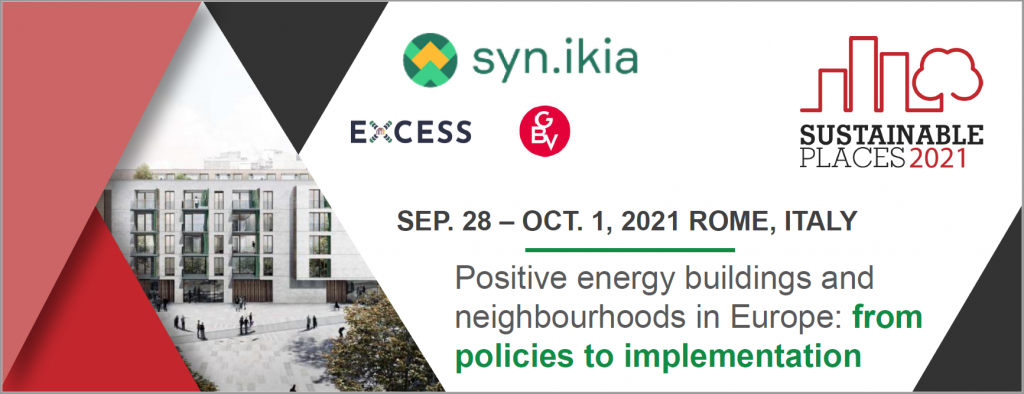"Positive Energy Buildings and Neighborhoods " workshop
15:30 - 17:00, 28th September 2021, virtual

Sustainable Plus Energy Buildings and Neighbourhoods (PEBs and SPENs) can play a crucial role in achieving climate and energy targets as large-scale projects improving community facilities, health, wellbeing, safety, public spaces and affordable housing. SPENs, much like energy-positive buildings, can reduce and avoid creating peak electricity demand on the grid. As this peak demand is usually met with carbon-intensive generation, SPENs could contribute to peak shaving of the energy demand and become an integrated part of the local energy system. The SPEN concept offers an opportunity for building users to take ownership of their home, and to create low carbon living spaces that would integrate on-site renewable energy sources, local storage facilities and energy sharing hubs to exploit 100% GHG emission savings.
This 90-minute virtual workshop dove into the barriers and opportunities that the existing EU, national and local regulatory frameworks provide for the development of SPENs on the ground and highlighted successful examples of SPEN implementation in different EU countries. The workshop explored synergies between several SPEN projects and identified best practices of local implementation of SPENs across Europe. The workshop aimed at helping to build the European SPEN Community, launched by the Syn.ikia project, and to continue the discussion and build bridges between the various sectors that SPENs cover.
There are several barriers holding back the development of PEBs and SPENs across Europe including the lack of sectors integration, of common standards and definitions, as well as the limited consistency between policies. However, there is a strong will to move towards neighbourhood approaches, emphasised in key European directives and initiatives such as the Renovation Wave strategy, the Energy Performance of Buildings, and the Renewable Energy Directive. Local-level decision and policymaking is crucial to create the necessary synergies and partnerships for the implementation of SPENs that respond to local needs, utilise local renewable sources, disseminate benefits to energy community members and generate added value for the greater local communities. It is important to use the policy window of the Fit-for-55 package and related reforms of the EU climate and energy architecture, such as the revision of the EPBD by the end of 2021 which should acknowledge the potential of districts and community approaches.
Agenda:
Discussion addressed the following issues: policy landscape impacting the implementation of SPENs at EU and national/ local level; what is needed for SPEN vs. the existing policy landscape; lessons learned from each project, potential of district approaches and citizen involvement.
Innovation
Projects participating in this workshop run pilots in different EU countries and therefore have experience on the ground as regard to implementing SPENs at local level and in different climate contexts. All projects introduce integrated energy design, with energy- and cost-efficiency measures, local renewables, local storage, energy flexibility, and energy sharing and trading. Key focus is two-fold: (I) create community engagement and spatial qualities, housing affordability, improved quality of life, and environmental consciousness to inform and enable behavioural change; (ii) create community participation models in flexible electricity markets.
